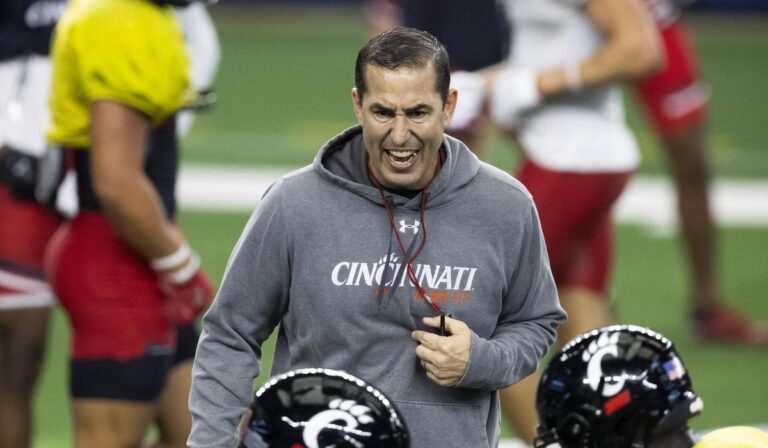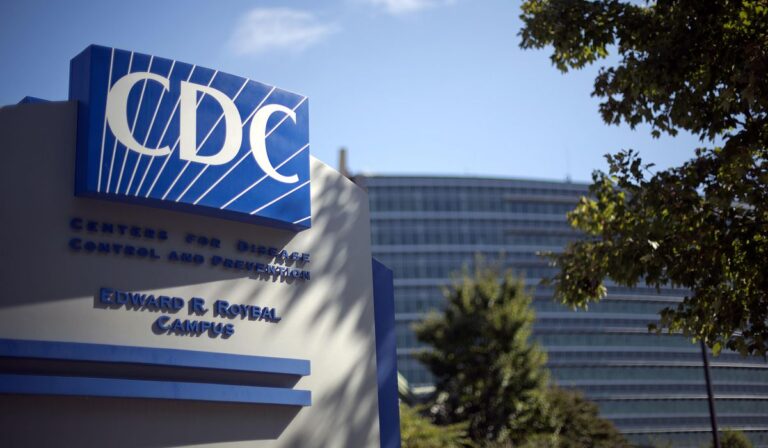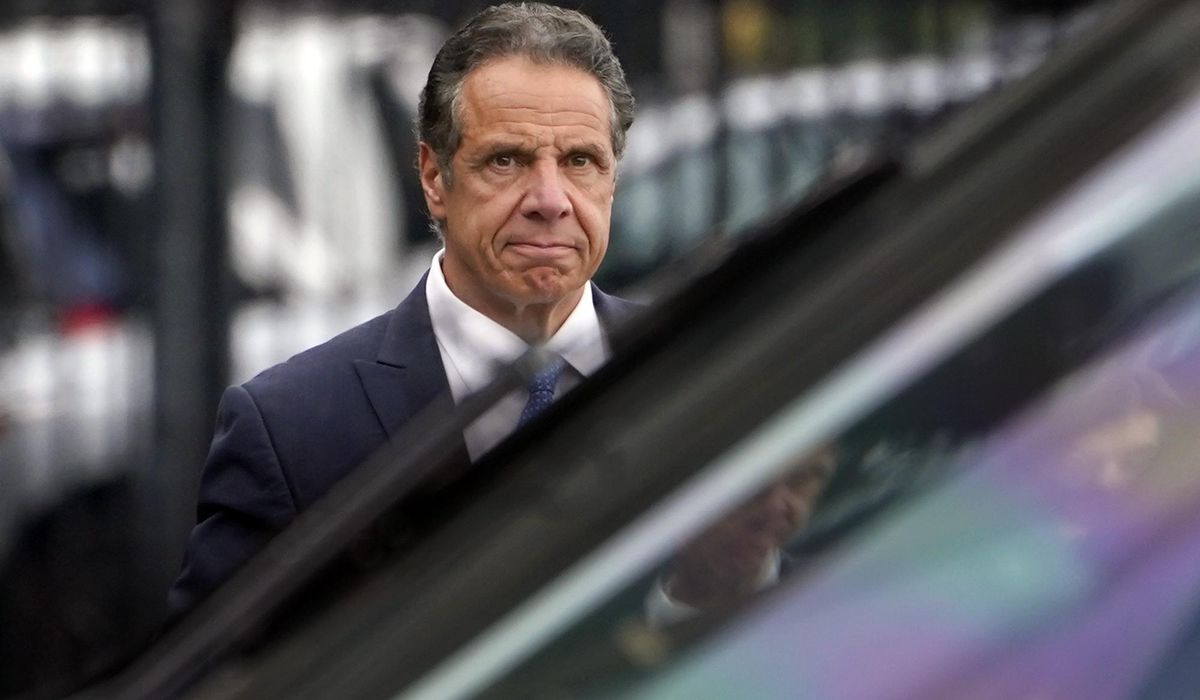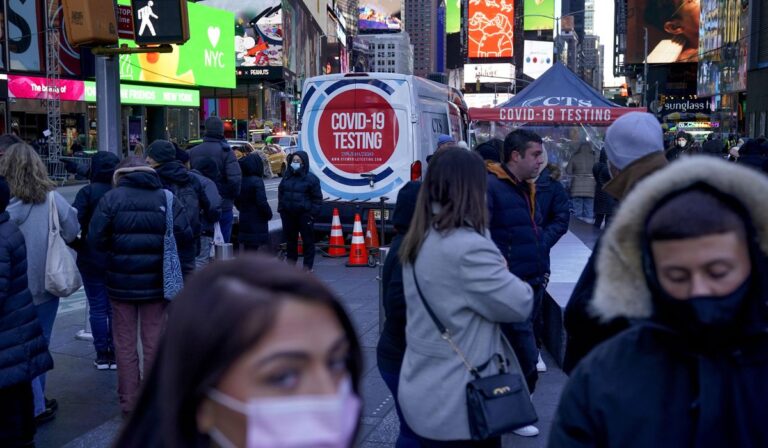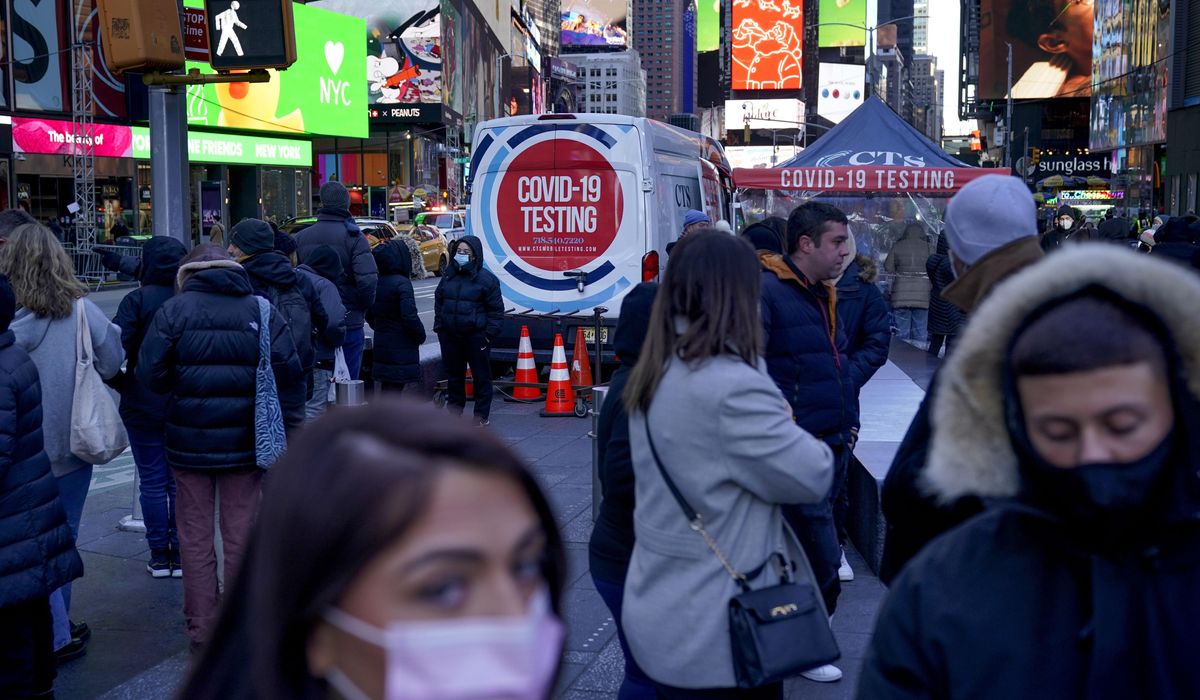
ARLINGTON, Texas — Cincinnati has heard for more than three weeks about becoming the first non-Power Five team to break into the College Football Playoff, and then what a big underdog the Bearcats are against Alabama.
“It’s definitely been a long time, especially, you know, with the nerves or excitement or whatever you may want to call it, just of the anticipation of coming down here,” quarterback Desmond Ridder said Monday.
These Bearcats aren’t nervous about the biggest game week in program history and facing the top-ranked defending national champion in the playoff semifinal Cotton Bowl on Friday.
With Ridder and former Alabama running back Jerome Ford, Cincinnati (13-0) is the only team to win every game this season. That included a validating victory at Notre Dame nearly three months ago before sweeping through the American Athletic Conference.
“We had a nice season, undefeated season … (we) need to be us and do what we do. We don’t need to do anything extra, just pretty much be us,” Ford said. “And I feel like being us will be enough to prove that we belong here and we should be here.”
While the Cotton Bowl is their last guaranteed opportunity to play together, especially for the more than 30 seniors, the Bearcats know it doesn’t have to be the end of what has already been an epic journey.
“Their attitudes have been great,” Cincinnati coach Luke Fickell said. “I think they really understand the opportunity they have in front of them, and these situations and these things don’t come around every year.”
Unless, of course, it’s Alabama, which is making its seventh appearance in the eight seasons of the four-team CFP format and will play its 12th playoff game. The Crimson Tide are 13 1/2-point favorites, according to FanDuel Sportsbook.
Fickell was Ohio State’s defensive coordinator when the eventual champion Buckeyes beat the top-seeded Crimson Tide in a semifinal game during the inaugural playoff seven years ago.
“I want them to enjoy the moment. I want them to enjoy what it is that they’ve created,” Fickell said of his Bearcats. “But I also don’t need to worry about them losing focus because that’s who they are. They’re excited about the opportunity. They’re excited about the challenge.”
Tide coach Nick Saban, who has won three of his six titles at Alabama during the short CFP era, said Cincinnati players do a great job of executing what they do.
“So it’s not going to be easy,” Saban said. “It will be a real battle, and, you know, our players have to prepare themselves the right way for that.”
Ridder said Christmas was a little more exciting when opening up presents with his family before driving back to Cincinnati and then traveling with the team to North Texas. He went to the Dallas Cowboys’ game on Sunday night in the stadium where he will be one of the main attractions Friday.
The Bearcats won 24-13 on Oct. 2 at Notre Dame. That was the only loss for the Fighting Irish, who finished fifth and were the first team out of the playoff in the final CFP ranking revealed Dec. 5.
After a couple of lopsided wins to start conference play, Cincinnati had close calls against Navy and Tulsa in a midseason stretch when the lack of consistent blowouts against non-P5 teams raised questions about whether an outsider really did deserve to make the playoffs.
“We had to go through a period of time there where we had to figure out who we were and what we really wanted to be, and quit trying to be something else that somebody else wanted us to be,” Fickell said. “I think we kind of got into that groove and really had a chance to kind of enjoy the last few weeks of the season playing better, better football and winning a championship.”
The Bearcats were the last undefeated team standing after a 35-20 win in the AAC title game over Houston, which had an 11-game winning streak and was the only ranked team other than Notre Dame they played.
“We’re excited to get down here and play Alabama and show not only ourselves, but everyone in the country, you know, what we can do against a top team,” Ridder said.
Offensive coordinator Mike Denbrock said there is a constant reminder to the players of the hard work they have done to have this opportunity, including last year’s undefeated regular season before losing to Georgia on a last-second field goal in the Peach Bowl. He said they have done a great job of staying focused.
“As a football team, we feel like we’ve earned our way here. We feel like and know we belong here,” said Denbrock, in his fifth season at Cincinnati after coming from Notre Dame. “This group of seniors, and this football team in particular, did everything that people asked them to do to get to this point.”

